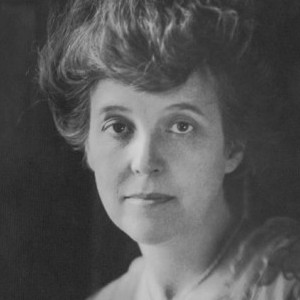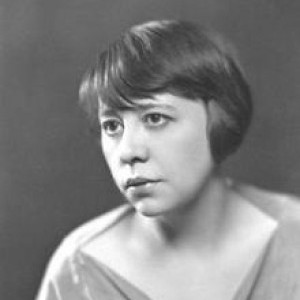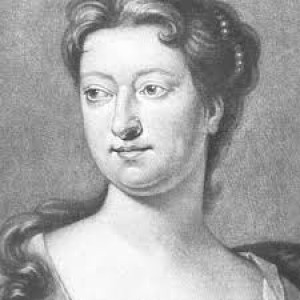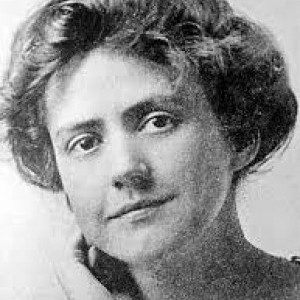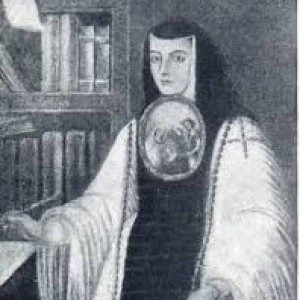ThInk Blot: Niki Tulk's "Baking and Exhibition and Sacrifice: Theatricalizing Gertrude Stein’s TENDER BUTTONS"
Baking and Exhibition and Sacrifice: Theatricalizing Gertrude Stein’s Tender Buttons
When publisher Donald Evans invited Gertrude Stein to send him a play, Stein sent a curious tri-partate work of unknown genre. Tender Buttons: Objects Food Rooms has exerted a profound cultural influence since it was published in 1914. Stein irreverently and with poetic, absurdist precision turns people into objects, words into shapes, and food into dreams, with tools of surreal resistance. Stein’s syntax deliberately and playfully cracks open linguistic and ideological spaces that traditional sentences have marked out under patriarchy—as Stein writes, “a sentence of a vagueness that is violence is authority and a mission and stumbling and also certainly also a prison.” As part of the NYC premier of Tender Buttons at Theater for the New City with the Van Reipen Collective in October 2014, with myself as director and co-designer, the text inspired its own translation into three-dimensional, theatrical space—the result was poignant, frightening, and at times very funny. And bursting with chicken motifs.
In his dramaturgical packet for our cast, Stein scholar and theater-maker Gary Heidt wrote this about Stein’s work:
Tender Buttons is not written as a theater piece. Theater pieces are often organized around characters and actions—and Tender Buttons does not immediately appear to have either. Tender Buttons is not even immediately intelligible. In other words, it doesn’t make any sense. It can’t be understood. It seems a particularly bad choice as a theater piece … I propose that we start off, unlikely as it may seem, assuming that it is a great idea to do Tender Buttons as a theater piece, and moving forward in a sort of innocent optimism, see if we can gather solutions to these problems. (Heidt, 2015)
Postcolonial scholar Elleke Boehmer writes that “colonial settlement … was expressed textually. Writing in the form of treaties was used to claim territory … Strangeness was made comprehensible by using everyday names, dependable textual conventions, both rhetorical and syntactic” (Boehmer 14-15). Strangeness made comprehensible—therefore able to be monitored, controlled, understood. Stein’s work (and perhaps her mission in this text) celebrated and created an architecture of strangeness, watertight against imperialist strategies aimed at reducing it to a theory, no longer mysterious, something we can contain. It was deeply important to me that our process did not partake in this type of dominating act, that as much as possible we approached the rehearsal process in an intentionally “non-colonial” way, allowing the text itself to speak and tell us what it wanted to say, rather than invading it with a specific lens and closing our eyes to what was already there in its landscape. This is akin to what Joshua Schuster suggests in his article “The making of 'Tender Buttons’: Gertrude Stein's Subjects, Objects, and the Illegible” that Stein, in the act of the initial writing itself, resisted forcing an agenda onto an idea, she respected the idea as something that would speak in its own good time and in its own way:
… Stein wrote that “I did express what something was, a little by talking and listening to that thing,”[14] hinting that she was writing as if having a conversation with an object, listening to objects speak.
The rehearsal process became a space of intensive, embodied listening. Heidt went on to say that “Tender Buttons doesn’t have a dearth of meaning—it has an excess of meaning … Stein unleashed the conflicts that were already there in the language, in the system, in the arrangement, in the consciousness.” These conflicts are there, but coded. So what was the system, the arrangement that Stein was breaking open, even dismantling? And how did she do this? I want to suggest that the key system Stein took on—her own concessions to it notwithstanding—was, and is, patriarchy. And let me be clear that by patriarchy I do not mean males, I mean the system of privileging (white) male supremacy—the ennobling and centering of his-story, and not her-story—that has soaked into the essence of both how we map the world in all its permutations (geographical, sociological, cultural) and into who we are—who we are constructed to be—inside its machinations. Krzysztof Ziarek, in Gertrude Stein and the Making of Literature, writes “Stein's texts engage, as it were, in their own form of cryptography, in the continuous process of transposing the space before words into the written text … such writing aims to bring to words the erased, unknown, "language," often sought by feminist critiques of aesthetics.”
I share the following thoughts not as a Stein scholar, but as a theater artist who deeply and intensively engaged with the many levels of consciousness at work in Tender Buttons. I have selected two elements that I will be able to do no more than touch on in this brief time: syntax and the surreal resistance of messing with it; and the theatrical rendering of the work and what it caused us as a theater collective to contend with, and discover.
I need to begin with language, because Stein’s most visceral, enduring and dedicated assault on patriarchy was to address the power of language to create realities. It is what all female and non-binary playwrights do in one way or another, but Stein pushed boundaries on this until they collapsed, and we could see through them to something else. If we listen. She sought to uncover the cracks and slippages, breaking open ways for the female voice to leak through, to scream through, to create enough silence that we might hear the beating of women’s hands upon the bars of their cages. Language creates and it curates. In an oral culture concepts and their embodiments remain somewhat fluid, but with the written word came the need to standardize, fix in time—and this need grew exponentially with the printing press and the resultant fundamental shift in human culture, consciousness and memory. There had always been a need to order words, to create a flow of words in such a way that ideas could be shared and developed.
With writing, we now had a complicated syntax: parts of speech, linear order. We have subjects. We have objects. The sentence in English revolves around the subject who does something to/around/over an object. Us and Them. I and Other. Inherent in our English syntax we have also been burdened with the essential binary—the root, I would suggest, of all oppression—present in this very basic curation of language; the choices already made for us, of what should be where, and what positions should be taken up—and by whom. There are deeply problematic power relations existing in the way we share ideas in syntax—and we accept them as being as natural as breathing. As natural as capitalism. Syntax is not ideologically neutral. It is all about the ordering, placement and the careful crafting of things (objects?) in such a way as to render some with agency (the subject who does/thinks/is) and others with little to none—the object who gets done to, done over, done in. Enter Gertrude Stein. She spent many hours laboring over the dismantling of sentences, the seeming orderlessness of the result actually the fruit of her own surgical, syntactical procedure (she did go to Harvard Medical School after all). A labour of love, indeed. To return to Schuster for a moment, “Stein does not allow meaning to settle on one interpretive system, instead continually moving between sound and sense, normative and nonnormative grammar, familiarity and alienation, immersion and exclusion … sense is made and unmade … It might be more correct to say that Stein writes in a way that is prior to making these binary distinctions.” Or, perhaps, she writes in this way in response to binary distinctions.
The immersion in Tender Buttons took the better part of three years, and the journey was profound in what it opened up the spatial rendering of Stein’s words. In taking the architecture of written language and shifting it, she was a precursor to what architect, writer and activist Doina Petrescu writes about regarding the feminist poetic discourse of Altering Practices, or Alterities. Alterities—alter being Latin for other, and used more as a verb than a noun—has emerged out of feminist practices in architecture, and relates very much to a trans-disciplinary model of identifying “politics and poetics within the relationship between art and architecture, including issues of technology, bodies and space, gendered practices and situated knowledge” (Petrescu xv). Coming out of design and specific geo-spatial ways of working, the theory of Alterities seems completely connected to the spatial and aesthetic practice of feminist theater-making. Petrescu writes that:
The Altering practices are altering identities and re-territorialising domains that no longer correspond to traditional categorizations … breaking barriers between theories and practices, academia and activism and enabling new coalitions between different intellectual, aesthetic and political positions. They are subverting the critical division between ‘thinking’ and ‘doing’, emphasizing the embodied character of the production of theory and the reflexive and situated approach to practice. (5)
Altering practices seems to speak into what Stein does in Tender Buttons, and what our group of feminist theater-makers made central to our rehearsal/devising process. We investigated responses to individual words and phrases from the text in movement, sound, and physical improvisation—with a specific focus on exploring rituals associated with food—for many months before we brought the entire text into the rehearsal room. We began with the idea of the room as a page, on which movements could be inscribed; a syntax developed that was more an anti-syntax, or perhaps one that is a pattern of movements and gestures working as marks in a code, or a set of runes.
We explored how everywhere we go, we are in a conversation with space. There are particular things we can and cannot do when we are in a particular space; we encounter a myriad of codes and signs that reflect, represent and enforce cultural norms, modes and expectations. We move through a subway differently than we do through an art gallery. Architecture, words, acts like cooking and having dinner are all cultural codes. We developed silent choreographies of spaces, and out of this came a discovery of rituals in our everyday lives; many of these involved food, with its preparation, serving, responses. We also noted the way rituals of food are contested and subverted, used to starve the body as well as nourish it, to exclude, to exercise and restrain power.
After many months, we brought in parts of the text. I chose phrases and placed them in frames around the room—we listened to them, spoke them back as if we were repeating someone’s name we had just learned; we improvised with them through scenic frameworks. Our “rule” was that we move, breathe, and only then speak.
A white cup means a wedding.
A breeze in a jar and even then silence …
Suspect a single buttered flower, suspect it certainly.
Beware of no lake and no larder!
Seat a knife near a cage and very near a decision.
A nice old chain is widening, it is absent, it is laid by.
Over many months, we observed with care as we handled/ were handled by the words—what happened sonically? To our bodies? To the space? Our breath? To the ways we interacted with each other? We discovered patterns of ritual that were both familiar (the dinner party, the preparation of food, courtship, seduction) and also those made newly strange by virtue of Stein’s syntax. The role of food in western culture, history and in the landscape of social strata that is contained within (perhaps especially) the female body was a theme that emerged as we worked: the female body as “juice and size and baking and exhibition and nonchalance and sacrifice …” with the paradoxical elements of woman as consumer of food, and also as the object of consumption. As we explored those fissures, and the new rhythms and sounds, we discovered in a visceral way how deeply patriarchal and class/caste-based systems have regulated not only human relationships, but also the language of those relationships.
We were consistently surprised by what we discovered. A chicken was plucked by a woman wearing a white ballgown, sitting on a dinner table. She gathered the feathers in her skirt, tipped them into the pot, and ceremoniously wrapped the body of the chicken and hung it in a snow-white bag on a meathook. The feathers were then ladled out once guests arrived. A bearded man in a chicken suit, clutching an empty cooking pot, walked cautiously around the space while the same woman threw boiled eggs from her place standing on the dining table; the last one landing in the pot, to the concern of both woman and man-chicken. Some of these images you have witnessed behind me on the screen.
Gertrude Stein had much to contend with, being half of one of the most famous lesbian couples being one of them. To speak of something that could not speak its name, was the need to find a way to unspeak, to unwrite, to take from the most hegemonic structure we have—written language—and create from it objects and form, charged in both their presence and in what they made absent, a new syntax that was not the linear, rational form of His-story, but something that could express the object in traditional syntax: woman.



photos by Ben Stamper
Works Cited
Boehmer, Elleke. Colonial and Postcolonial Literature: Migrant Metaphors. Oxford: Oxford University Press, 2005. Print.
Heidt, Gary. "Tenderizer." Received by the author, 13 Jan. 2013.
Petrescu, Doina (Ed.) Altering Practices: Feminist Politics and Poetics of Space.
London and New York: Routledge. (2007)
Schuster, Joshua. "The making of ‘Tender Buttons’: Gertrude Stein's subjects, objects, and the illegible." Jacket 2. Accessed 30 July 2017.
Stein, Ms Gertrude. Tender Buttons: Objects, Food, Rooms. (Classic Reprint). S.I.: Forgotten Books, 2015.
Ziarek, Krzysztof. “On ‘Patriarchal Poetry.’” In Gertrude Stein and the Making of Literature, edited by Shirley Neuman and Ira B. Nadel, Boston: Northeastern University Press, 1988.
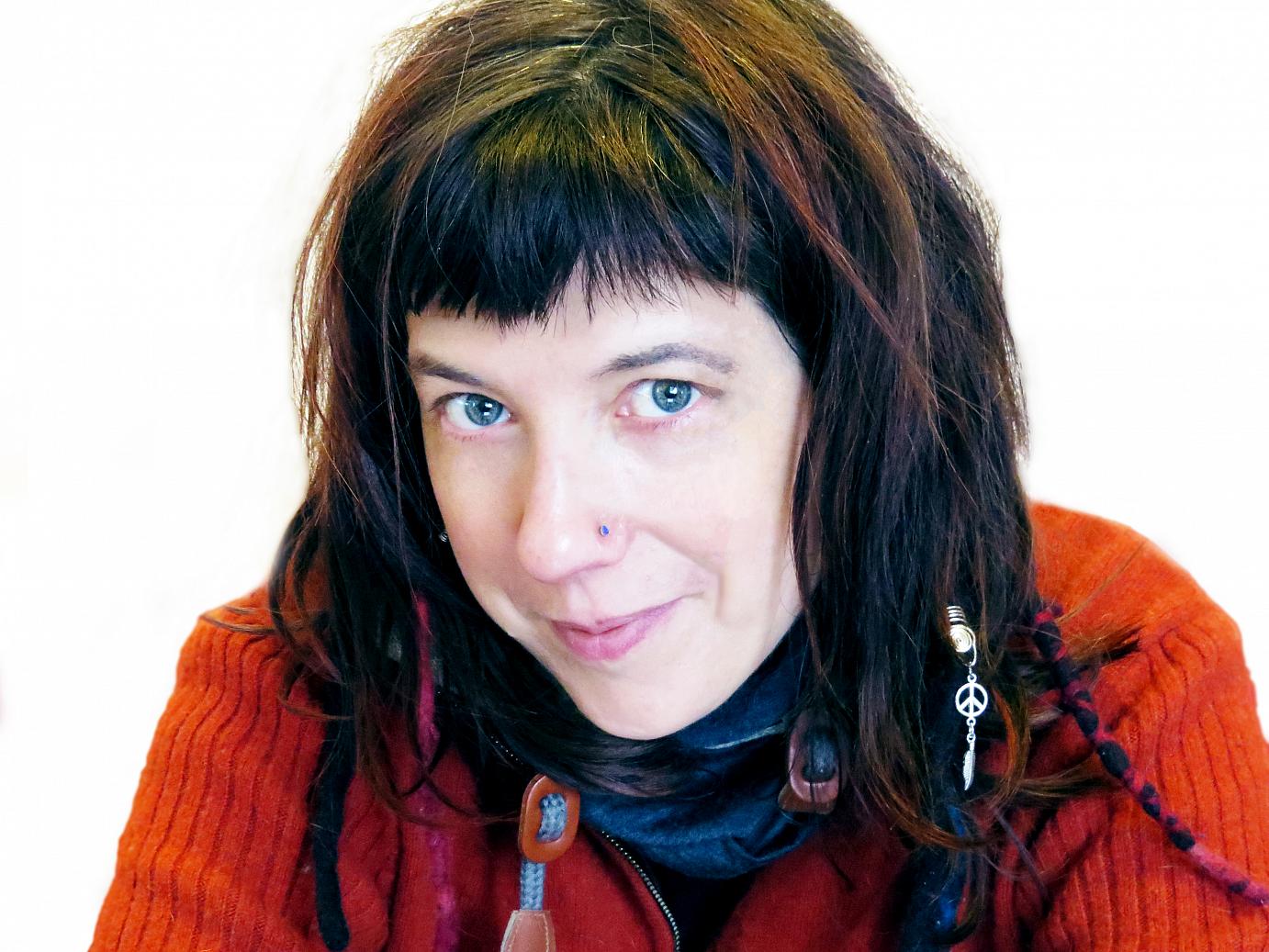 Niki Tulk is an ex-pat Australian writer and theater-maker; she is both a PhD candidate in Theater, and a PhD student in Intermedia Art, Writing and Performance at the University of Colorado Boulder. Niki has an M.F.A. in Creative Writing from The New School, and taught at Parsons The New School for Design, St Joseph's College in Brooklyn, and Triskelion Arts. She has published a novel, and has poetry, fiction and criticism in multiple journals, including Emergency Index, The Saranac Review, Rock River Review, The Sheepshead Review, The Feminist Wire, and The West Trade Review. In addition to freelance theatre directing, Niki is currently fiction editor of Antipodes, and co-managing editor of PARtake: The Journal of Performance as Research. www.nikitulk.com
Niki Tulk is an ex-pat Australian writer and theater-maker; she is both a PhD candidate in Theater, and a PhD student in Intermedia Art, Writing and Performance at the University of Colorado Boulder. Niki has an M.F.A. in Creative Writing from The New School, and taught at Parsons The New School for Design, St Joseph's College in Brooklyn, and Triskelion Arts. She has published a novel, and has poetry, fiction and criticism in multiple journals, including Emergency Index, The Saranac Review, Rock River Review, The Sheepshead Review, The Feminist Wire, and The West Trade Review. In addition to freelance theatre directing, Niki is currently fiction editor of Antipodes, and co-managing editor of PARtake: The Journal of Performance as Research. www.nikitulk.com





